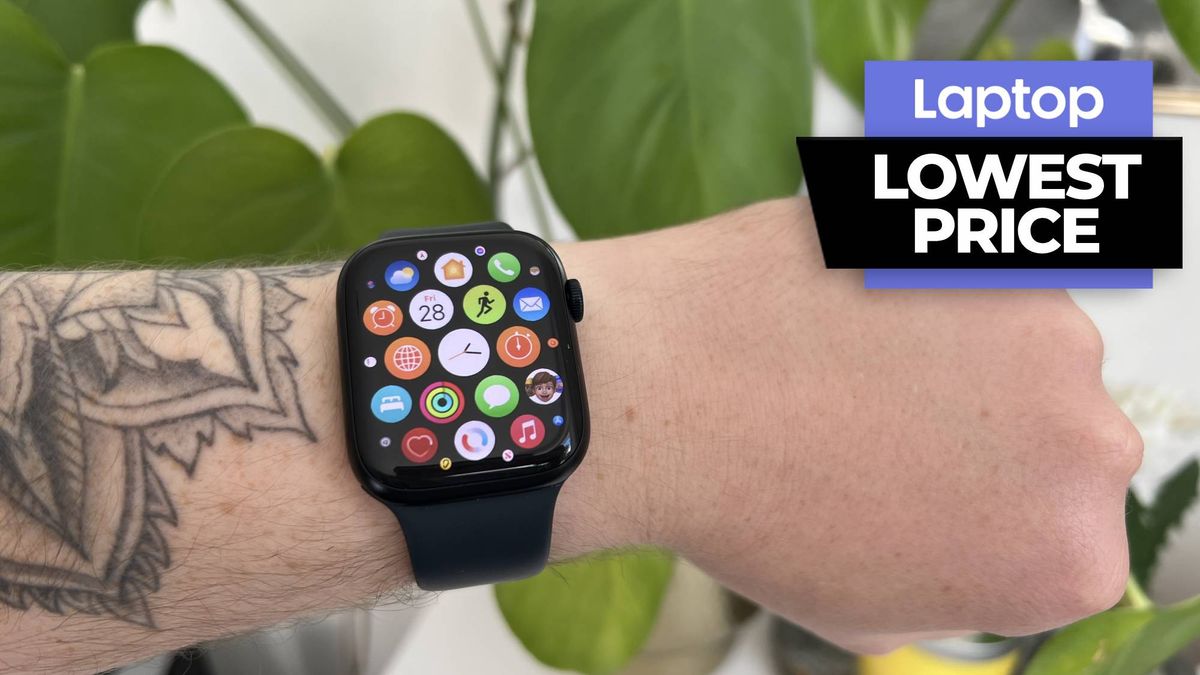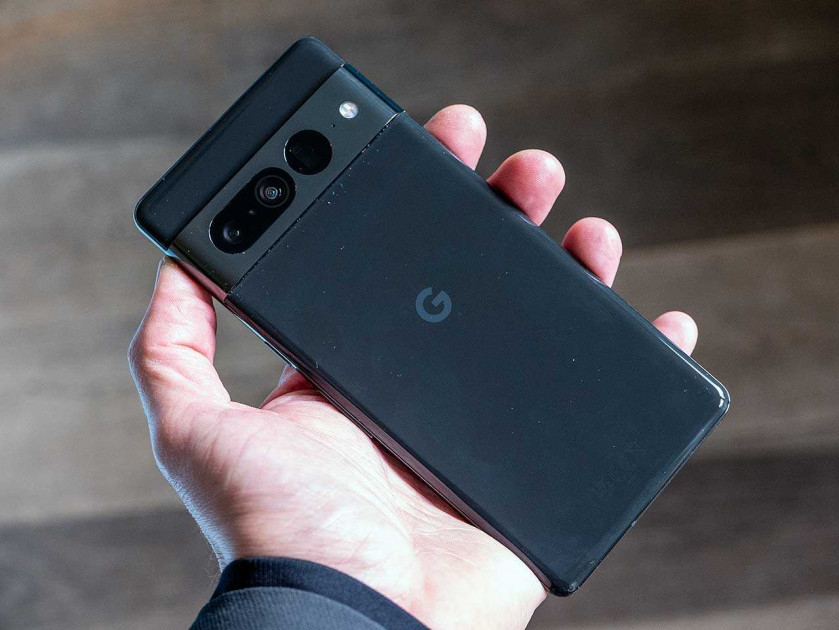
Introduction
The latest two models for 2022 in Google’s line-up of smartphones are the Pixel 7 and the Pixel 7 Pro – the latter of which is a more advanced device, and the one which we’ll be looking at in this review.
It features a triple-lens camera set-up, including a 50 megapixel main camera, an ultra-wide angle lens and a 5x optical zoom lens.
There’s a number of other specifications which are aimed squarely at photographers, including several camera shooting modes and 4K video recording.
The Pixel 7 Pro is also the largest phone released by Google to date, with it featuring a 6.7-inch QHD+ screen. Other useful features include a 5000mAh battery, up to 256GB storage and 5G connectivity. As we’ve seen with a few other smartphone brands of late, there’s no charger included in the box.
At the time of writing, the Google Pixel 7 Pro costs £849 for the 128GB version, or £949 for the 256GB storage option. This makes it cheaper than both the iPhone 14 Pro and the Galaxy Samsung S22 Ultra, and puts it roughly in line with similar devices such as the OnePlus 10 Pro.
Ease of Use
With its 6.7-inch full-screen display, the Google Pixel 7 Pro is bordering on “phablet” territory. It’s the same size as last year’s model but considerably larger than the Pixel 5, for example, which was actually quite small in comparison at just 6 inches.
Whether you like that or not is down to personal preference, but it’s definitely something to consider, especially if you have small hands, or have concerns about how well the phone might fit into your pocket.
If you prefer smaller smartphones, it might be worth thinking about the regular Google Pixel 7 instead, which is a more friendly 6.3-inches.
The benefits of a large screen is that composing images, and viewing them back on the high-resolution display is a delight. If photography is one of your primary concerns for your smartphone, then it’s likely you’ll be very pleased with how it looks.
The downside is that it can be difficult to handle, especially when using the phone for regular activities such as texting or sending emails.
As well as the larger size, the 7 Pro also benefits from a high resolution display, boasting a QHD+ resolution (1440 x 3120), as well as a fast 120Hz refresh rate.
The screen has a Corning Gorilla Glass coating, designed to make it resistant to scratches and breakages – though as always, we’d recommend investing in a case to protect your device.
The design of the Pixel 7 Pro is very sleek and stylish, in fact it’s very similar to Samsung devices – but at a much cheaper price. As such, it’s got rounded and smooth edges, with metallic detailing.
Almost the entire front of the screen is taken up with the display, with the front-facing camera surrounded by a barely perceptible cut out – this is quite different from devices which use a notch-type cut out, such as the iPhone 13 Pro.
There are three different colour ways available for the Pixel 7 Pro, which are Hazel, Snow, and the option that we’ve been using “Obsidian”, which is very dark grey that borders on black.
On the back of the camera, there’s a large strip towards the top of the device, which protrudes from the device body and houses the lenses and flash. This means that it won’t lay completely flat on a surface, and it also makes for quite a striking look.
Physical buttons are kept to a minimum – as we’d expect for a modern smartphone. There is a small button on the side of the phone which can be used to switch the phone on/off, as well as wake the screen. Double pressing this button will also launch the native camera app.
Just below this, there is a rocker switch which can be used to control the volume, as well as being used as a shutter release if you don’t want to use the on-screen virtual controls.
Android 13 is included for the Google Pixel 7 Pro, the latest operating system for the Android system. As Google is the creator of Android, it was the Pixel 6 series phones which were the first to have it. Other devices using the Android operating system can now also access Android 13 though.
The native camera app can also be launched from an unlocked home screen by tapping on the camera icon. By default, the app launches in “Camera” mode, which is probably what most users will be happy to use for the majority of their shots.
In this mode, you’ll notice that there are four different focal lengths to choose from, indicated by numbers running along the bottom of the camera app screen. As such, you’ve got .5, 1, 2 and 5 – once one of them is selected, it’ll be surrounded by a coloured circle and will display as 1x, 2x and so on.
You can also pinch to zoom to move between the four focal lengths, as well as moving up to 30x Super Res digital zoom. Despite the four focal lengths on display, there are only three actual lenses available to choose from.
The main camera (1x lens) is a 50MP Octa PD Quad Bayer wide camera, with an f/1.85 lens. This is joined by an ultra-wide 12 megapixel camera (0.5x f/2.2 lens), and a 48 megapixel telephoto camera (5x f/3.5 lens). Selecting 2x will see the 1x camera used and cropped – and indeed if it’s too dark, the 1x lens will also be used for 4x and beyond too.
At the top of the screen, you can tap a small arrow to be presented with settings which you can adjust. Here you’ll find options such as switching off/on the flash, setting a timer and choosing an aspect ratio.
There are a couple of interesting settings here that are worth mentioning too – including Night Sight, which is available as its own mode, or, it can be set to automatically activate if the phone detects low light levels.
Top Shot is another useful function which captures a short video alongside a stills shot. From this, the Pixel will suggest moments or frames that are worth saving. This mode can’t be used in conjunction with certain other modes.
You’ll also find the ability to switch on raw format shooting in this section, but only if you’ve enabled in the “more settings” screen, which you can access by tapping “more settings” below the limited options on display.
The phone will need to be unlocked for this and you’ll find other options such as switching on certain manual controls (white balance and exposure compensation), camera photo resolution, switching on a grid, video stabilisation and so on. It’s worth familiarising yourself with the options available here when your first pick up the phone.
If you have automatic Night Sight mode set up, then you’ll see it displayed on the screen as a circle with a crescent moon icon. If low light is detected, that same crescent moon will show on the shutter release icon.
The last icons to be aware of on this screen are the option to switch to the selfie camera, as well as the playback option – the latter will only show you images that you have taken in the current shooting session if the phone is otherwise locked.
Along the bottom of the screen, you’ll see other shooting options which are available. To the left of the Camera option, you’ll see stills modes – Portrait, Motion and Night Sight, while to the right you have the Video and Cinemtaic options, plus additional lesser-used modes grouped together under a “Modes” header. In here you’ll find Panorama, Photo Sphere and Lens – the latter of which you can use for functions such as translating text.
Portrait mode is used to create a shallow depth of field effect. Although primarily aimed at photographing people, you can use it for other subjects, such as still life objects or pets.
To use it, you simply point the phone at whatever it is you want to photograph, and you should see the shallow depth of field effect appear. You can use either a 1.4x or 2x focal length – the latter being good for traditional portrait shots, and the former being good for showing the portrait in an environmental type context.
You can also use Portrait mode in conjunction with Night Sight if photographing portraits in low light situations. An additional option will also appear in the settings menu – the ability to use face retouching, or switch it off.
Within the Motion mode, there are two different options: Action Pan and Long Exposure. With Action Pan, the camera will focus on a moving subject and add a creative blur to the background. Here you’ve got the option to either hold the camera still or follow the subject to get the motion effect. Long Exposure can be used to creatively blur the subject – and can be used without a tripod. In both of these options you can use any of the 0.5, 1x, 2.2x or 5x focal lengths.
The last option here is “Night Sight”, which you might prefer to use as a separate mode rather than relying on it automatically switching on (or off). Here, the phone will capture a set of short exposures, blending them together for increased detail and exposure balance.
You can also use this mode for astrophotography, but that works best in remote or very quiet areas which don’t have other artificial lights in the vicinity. Here again, you can use any of the standard focal lengths to shoot in Night Sight.
Switching to the Video mode and there are a number of options here to take note of too. The “Normal” mode is what you’ll use to create most videos. Here, you can use any of the lenses. Tapping the settings icon will allow you to switch between two different resolutions (Full HD or 4K) as well as two different frame rates (30fps/60fps).
There’s also an option to let the camera decide the most appropriate frame rate for the situation. In the extra settings menu, you can switch on video stabilisation, and “Audio zoom”, which amplifies the sound of the subject and reduces background noise if you zoom into the subject.
Also in the video mode you’ll find the option to shoot in Slow Motion or create a Time Lapse. If you tap Slow Motion, you can shoot at 1/8x speed or 1/4x speed, but you can only use the 1x or 2.2x focal lengths – or pinch to zoom out to 7x digital zoom. The telephoto or wide angle lens are not selectable. If you tap the Time Lapse option, you’ll be able to shoot at 5x, 10x, 30x or 120x and you can use any of the focal lengths.
Cinematic is a brand new video mode for the Pixel 7 Pro which automatically creates a lovely background blur and allows you to easily rack focus between the foreground and background subjects in the scene, much like a professional cinema camera.
You can also choose to adjust the color temperature with the left vertical slider or the brightness with the right vertical slider whilst the video is being recorded.
This new feature works really well, is intuitive to understand and is a great addition to the Pixel camera ecosystem. Note that the maximum frame rate is only 24fps, though, which may limit its use for some owners.
It’s disappointing not to see a full manual control mode in the native camera app for the Google Pixel 7 Pro. It’s something we’ve been complaining about for some time, and while the app is pleasantly straightforward, it still seems a bit remiss for this option to still not be available.
That said, it is possible to shoot in raw format (which will be the universal DNG format), and you can also switch on the ability to control white balance and exposure compensation, so manual control is not completely absent.
If you have those latter two options activated, then you’ll see sliders appear on the screen when you tap it, which you adjust. You’ll also be able tap around the screen to choose a focus point before you release the shutter. If you want more manual control, there’s plenty of apps you can download from the Play store to give you those options, too.
In playback you have some advanced options which are worth investigating. Google uses computational photography to work some of its editing wizardry, including a tool called “Magic Eraser” which can be used to remove unwanted objects from your shots.
It does this well in a variety of situations, though if there’s a busy or complicated background the effects can be a little mixed. It will tell you what it thinks should be removed and you can tap to get rid of it with just the tap of a button. You can also add your own markings to remove more from the scene if you need it to.
Another interesting tool is a Sky enhancer, which you can use to add effects such as a sunset or stormy weather. Other editing tools available include the usual adjustments to cropping, brightness and the like, as well as the ability to add digital filters. Of course there’s also the option to download additional editing apps from the extensive Play store.
Image Quality
Google Pixel phones have long been known for their quality – indeed, it seems to be why they are known by the Pixel moniker in the first place. The Google Pixel 7 Pro proves to be an evolution of an already well-performing model to make it the company’s best performer yet.
In good lighting conditions, the Pixel 7 Pro produces excellent results with vibrant, well-saturated colours and plenty of detail. The three different lenses all put in a good performance, though – as is often the case – it’s the “main” lens from which you can get the best results.
The inclusion of a telephoto lens is great for getting closer to the subject, though it generally provides much less detail than the wider angle options. Digital zoom is useful to have if you really do need to get even closer to the subject, but it’s best avoided for the best image quality if possible.
“Night Sight” once again puts in a good performance for the Pixel 7 Pro, providing good quality shots in lower light conditions. Again, it’s the main lens which yields the best results, though those taken with the ultra wide angle or the telephoto optic are fine for social media sharing and the like.
Portrait mode works well, as we’ve seen in the past from the Pixel range, and while it’s not likely to replace a “proper” camera in the immediate future, it does an excellent job to create shallow depth of field effects, particularly with subjects that have a fairly bold or well-defined outline.
Being able to shoot in RAW format is beneficial for those who’d like to perform additional edits on their pictures, and while it’s a shame not to see a manual mode, at least the raw shooting gives advanced photographers some flexibility in that arena.
Video is captured impressively well, and while the Pixel 7 Pro might not have quite the same number of advanced video features as other models on the market, it’s exactly what we’d expect from a mid-range priced phone, and will be more than enough for the average consumer.
Focal Range
The Google Pixel 7 Pro has three lenses to choose from – standard, ultra-wide-angle and telephoto.
The 50 megapixel main camera offers an equivalent focal length of 23mm approximately – that’s an 82° field of view. You can also zoom to 2x with this module, although the resolution is reduced to 12.5 megapixels.
The 12 megapixel wide-angle camera has a much wider field of view at 125.8°. This module also doubles up as a macro lens.
The 48 megapixel telephoto camera offers a 20.6-degree field of view and can zoom up to 5x. At 2x zoom the resolution is 48 megapixels, which is gradually reduced to 12.5 megapixels as you zoom out to 5x.
Macro
As with any small-sensor smartphone, the Google Pixel 7 Pro has decent macro capabilities although it does not have a specific macro setting that you can actually select. The images below were captured with the phone’s minimum focus distance of 3cms – any closer in these scenarios and the camera wasn’t able to focus.

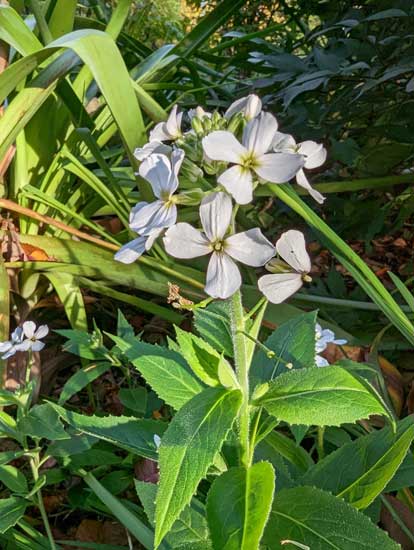


Portrait
In Portrait mode a blur is applied to the background using Google’s AI to help your subject stand out.
When viewed on a smart device, the blur effect looks good. The effectiveness of blur application in the Portrait mode is impacted by the subject and their surroundings. The ‘cleaner’ the background and the ‘simpler’ the subject, the better the overall blur quality around the subject.
Certainly if the background is densely packed with detail, or the subject does not have a clear silhouette (or even when they do), blur application can miss the mark.
Once viewed on a larger desktop screen at 100% it is possible to locate clumps of detail around your subject without blur applied. Those bothering to view images in such a way are more likely to have the capacity to apply blur themselves to those missed areas.
In the grand scheme of things, we’re impressed by the Portrait mode – it will take your candid portraits up a level compared to the standard camera and looks great on a smart device. Given this is all achieved entirely using image processing the results are really impressive.

1x

2x

1x

2x

1x

2x
Night Sight
Without any manual exposure controls available you can’t set either the shutter speed or ISO. However, the Pixel 7 Pro is a very capable low-light shooter, with its excellent Night Sight mode.
It’s possible to get a sharp handheld shot in Night Sight with shutter speeds in the matter of seconds. For astrophotography though, you’ll need a tripod for a sharp shot because exposure times are typically much longer.


Panorama
There’s a special Panorama mode located within the Modes option (along with Photo Sphere and Lens).

Sample Images
This is a selection of sample images from the Google Pixel 7 Pro camera, which were all taken using the 50 megapixel JPEG setting. The thumbnails below link to the full-sized versions, which have not been altered in any way.
Sample RAW Images
The Google Pixel 7 Pro enables users to capture RAW and JPEG format files. We’ve provided some Google RAW (DNG) samples for you to download (thumbnail images shown below are not 100% representative).
Sample Movies & Video
This is a sample 4K movie at the quality setting of 3840×2160 pixels at 60 frames per second. Please note that this 15 second movie is 123Mb in size.
This is a sample 4K movie at the quality setting of 3840×2160 pixels at 60 frames per second. Please note that this 15 second movie is 120Mb in size.
This is a sample 1080p movie at the quality setting of 1920×1080 pixels at 60 frames per second. Please note that this 15 second movie is 56Mb in size.
This is a sample 2x slow-motion movie at the quality setting of 1920×1080 pixels at 60 frames per second. Please note that this 40 second movie is 46Mb in size.
This is a sample 1x slow-motion movie at the quality setting of 1920×1080 pixels at 60 frames per second. Please note that this 28 second movie is 32Mb in size.
This is a sample time-lapse movie at the quality setting of 3840×2160 pixels at 120 frames per second. Please note that this 2 second movie is 11Mb in size.
Product Images
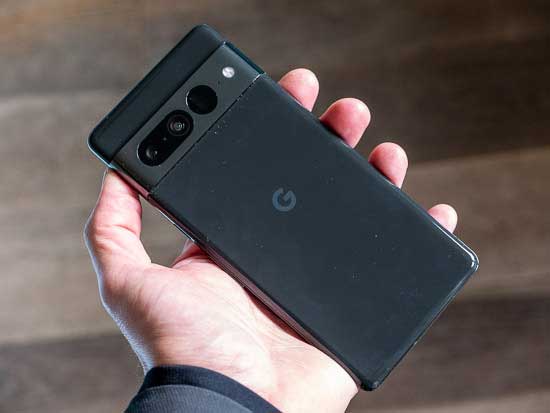
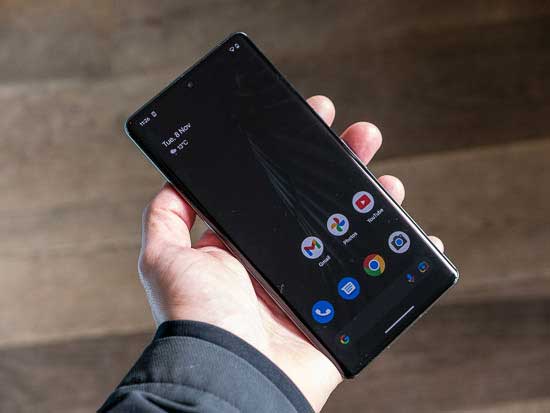
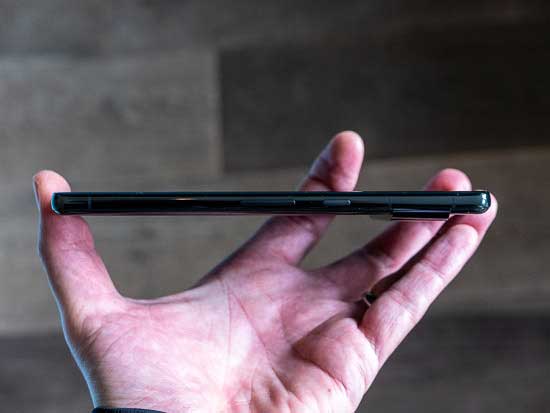
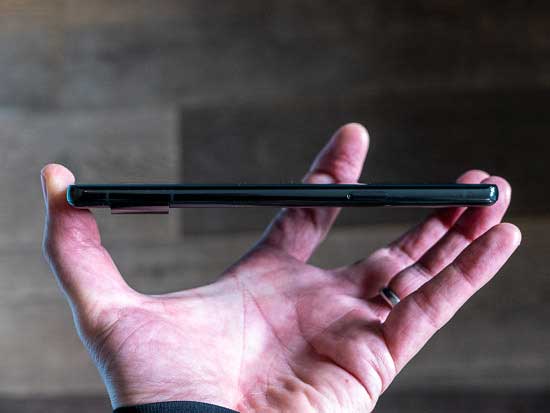
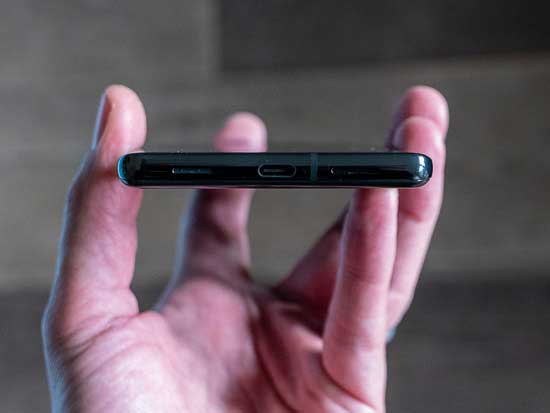
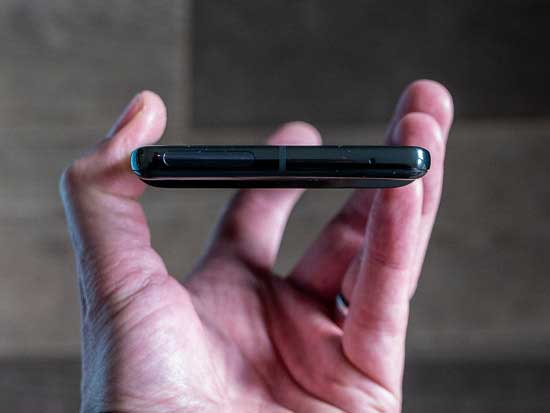
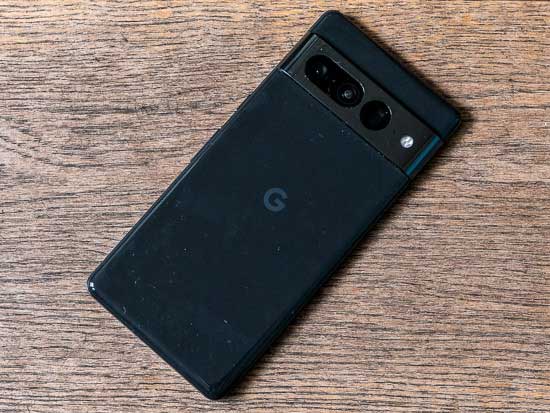
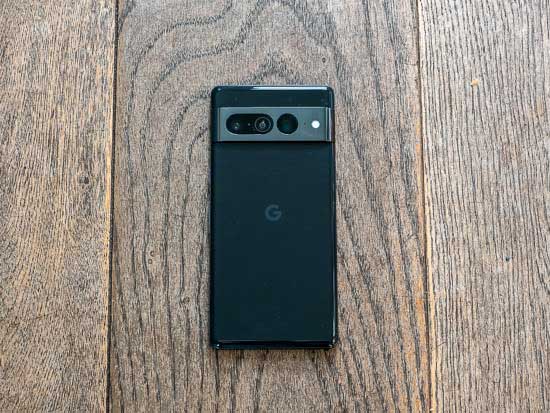
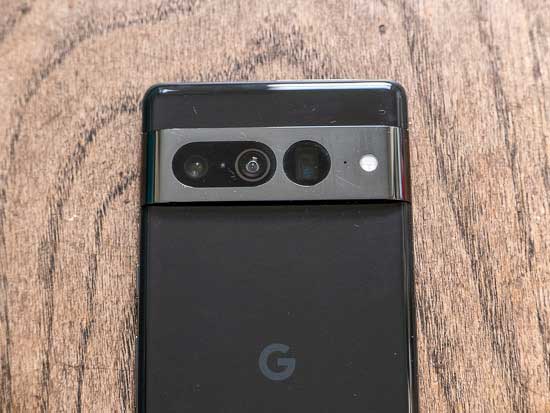
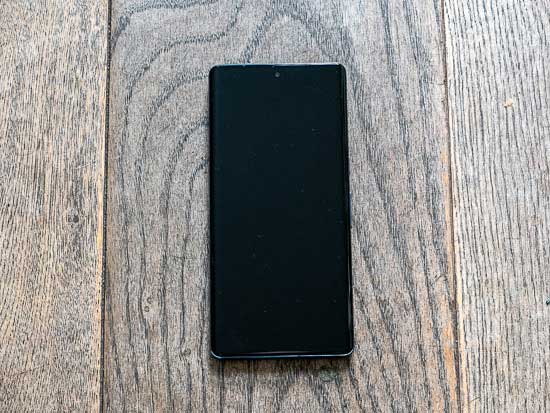
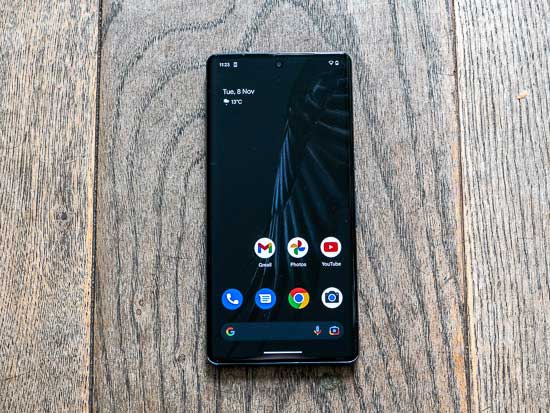
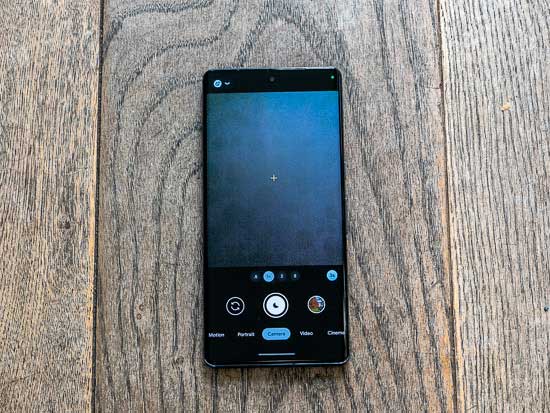
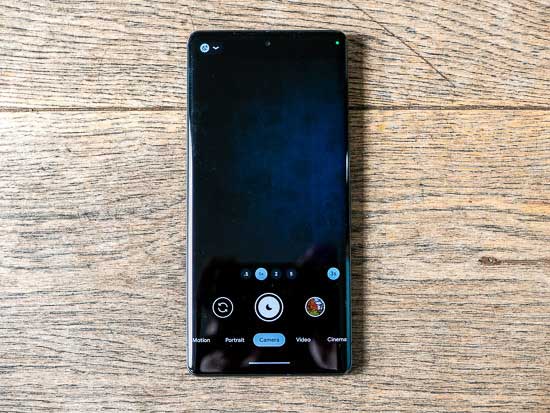
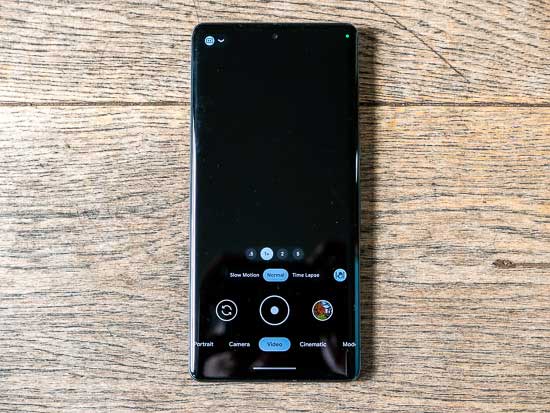
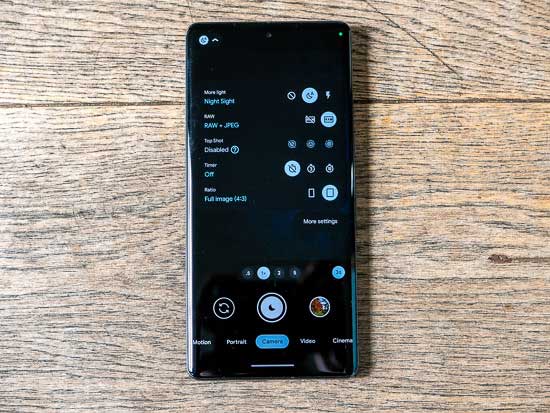
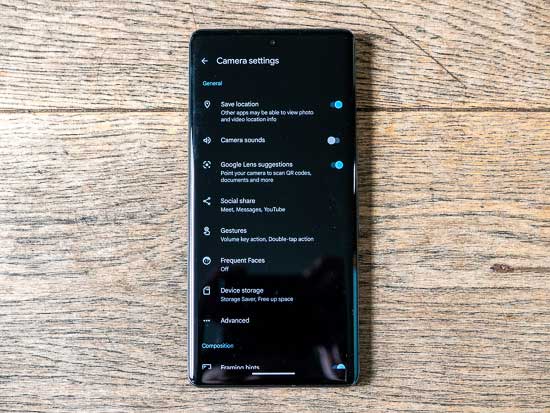
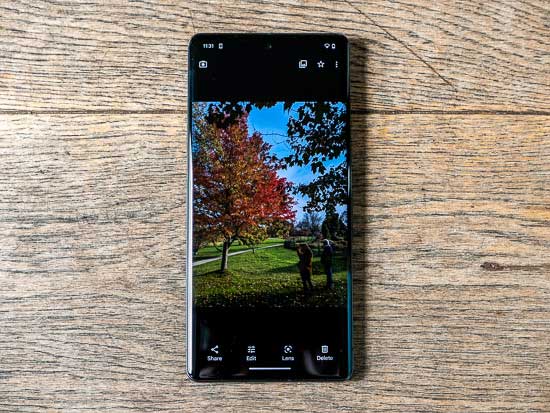
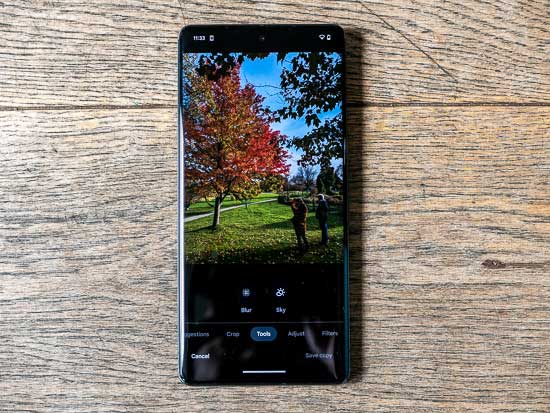

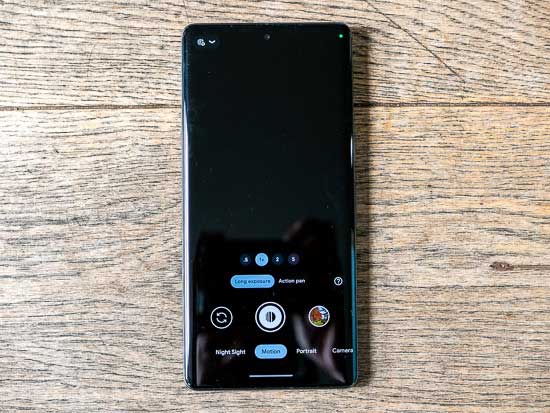
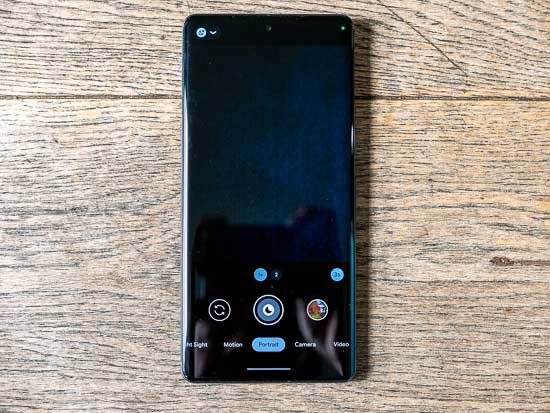
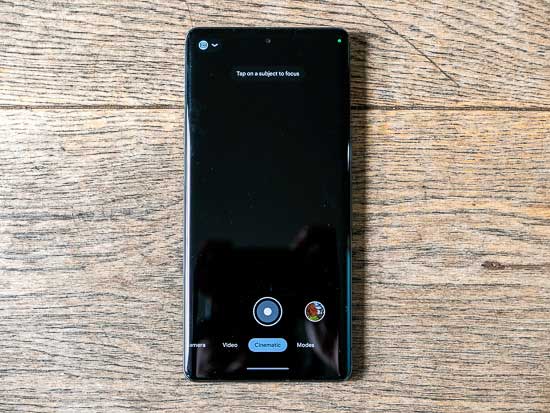
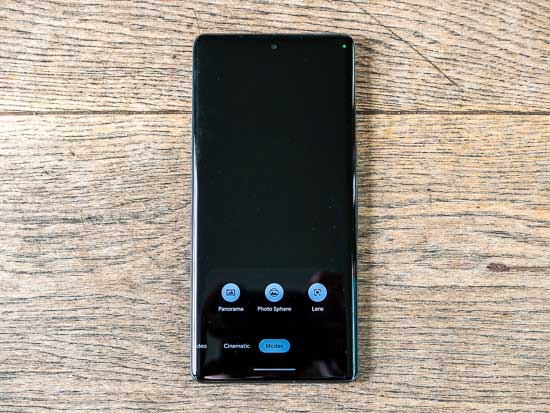
Conclusion
Although it’s an evolutionary rather than recolutionary upgrade of last year’s version, there’s still a lot to like about the Google Pixel 7 Pro, and at the price point it delivers a lot of admirable specs.
For those whose primary concern when buying a new smartphone is the quality of the onboard camera, the Pixel range should always be something to consider. In recent years, Google has dropped behind the likes of Samsung and Apple in terms of flexibility, but by finally introducing a third camera on last year’s Pixel 6 Pro, it’s a bit more on an even keel.
The results from those cameras are very good in a variety of situations, and although we’d like to see more advanced options in the native camera app, being able to shoot in raw format (DNG) is a nice touch for the advanced photographer.
What perhaps helps the Pixel stand apart from others on the market is its computational photography abilities. Options such as Motion, Night Sight and editing after the fact are improved or made possible by advanced algorithms working behind the scenes. That said, whether you actually use these options is another question – and they’re certainly not perfect either.
Having a very large screen makes the Pixel 7 Pro one of the larger phones on the market, and whether you’re a fan of that is down to personal preference. Some will love it, while others will find it less appealing. You might want to consider the smaller Pixel 7 if you don’t want a very large phone – but remember that you’ll be sacrificing the additional lens if you do.
If you’re a big fan of the Android ecosystem, then it also makes sense to opt for a Pixel. You get a “clean” rendering of the operating system, since it comes directly from Google itself, and you can expect future updates to be specifically primed for Pixel devices.
Overall, the Pixel 7 Pro makes a lot of sense for those who are keen on an Android smartphone and want a device which delivers high-quality imagery. The main camera is the best performer, but the others add some good support and are useful when necessary. Computational photography provides some excellent extras, and, we can only expect this to get better – via updates and advancements in the technology.
The Pixel 7 Pro might not be what we’d call “cheap”, but it’s significantly better priced than both the Apple iPhone 14 Pro and the Samsung S22 Ultra, so if you’re also keen to save a bit of cash, it represents good value for money.
| Ratings (out of 5) | |
|---|---|
| Design | 4 |
| Features | 4 |
| Ease-of-use | 4.5 |
| Image quality | 4 |
| Value for money | 4.5 |
Main Rivals
Listed below are some of the rivals of the Google Pixel 7 Pro.
The iPhone 13 Pro is Apple’s second-tier smartphone for 2021, offering exactly the same camera setup as the more expensive Pro Max flagship model, but with a smaller screen. With prices starting at around £$949, is this the best smartphone that you can buy for keen photographers? Read our in-depth iPhone 13 Pro review now, complete with full-size sample photos and videos…
The Apple iPhone 13 is one of four new iPhones released for 2021, released at the same time as the Mini, Pro and Pro Max models. With prices starting at around £$779, is this a good fit for keen photographers? Read our in-depth iPhone 13 review now, complete with full-size sample photos and videos…
The Sony Xperia 1 IV is a new flagship smartphone for 2022 that is clearly aimed at keen photographers and videographers. Standout features include a true 85-125mm optical zoom, 4K/120p video recording, 20fps burst shooting, and advanced Photo Pro, Video Pro and Cinema Pro apps. Read our in-depth Sony Xperia 1 IV review, complete with full-size sample photos and videos, to find out if this new device can justify its £1299 / $1599 price-tag…
Review Roundup
Reviews of the Google Pixel 7 Pro from around the web.
The Pixel 7 Pro has something to prove. When Google unveiled its first-gen Tensor-powered devices last year, many of us were caught up in just how affordable the Pixel 6 was. $600 for a flagship is still largely unheard of, and there’s no doubt that the Google Pixel 7 will grab just as much attention.
Read the full review »
The Pixel 7 and 7 Pro feel like fully realized, more refined versions of the phones Google launched last year. The Pixel 6 and 6 Pro marked a new chapter for Google’s mobile devices, with a bold new design and a brand new processor. They were ambitious, often great devices with a few rough edges. Google hasn’t completely smoothed them over in this iteration, but it has created a pair of phones that feel like worthy competitors to the iPhones and Samsung Galaxies of the world.
Read the full review »
The Pixel 7 Pro is the ideal follow-up to last year’s excellent Pixel 6 Pro. Not only is the design more refined, but the latest Google flagship sports several key upgrades and features. From impressive zoom to the new Tensor G2 tricks, this is Google’s best phone yet.
Read the full review »
Specifications
Display
Full screen 170 mm (6.7 inches) display 19.5:9 aspect ratio QHD+ (1440 x 3120) LTPO OLED at 512 PPI Smooth Display (up to 120 Hz) Corning® Gorilla® Glass Victus™ cover glass Always-on display with At a Glance and Now Playing Up to 1000 nits (HDR) and up to 1,500 nits (peak brightness) >1,000,000:1 contrast ratio HDR support Full 24-bit depth for 16 million colours
Dimensions and weight
4162.9 height x 76.6 width x 8.9 depth (mm) 6.4 height x 3.0 width x 0.3 depth (inches) 212 g 7.5 oz
Battery and charging
Beyond 24-hour battery life Up to 72-hour battery life with Extreme Battery Saver Minimum 4,926 mAh Typical 5,000 mAh Fast charging – up to 50% charge in about 30 minutes – with Google 30 W USB-C® Charger with USB-PD 3.0 (PPS) sold separately Qi certified Fast wireless charging Battery Share
Memory and storage
12 GB LPDDR5 RAM 128 GB/256 GB/512 GB UFS 3.1 storage
Processor
Google Tensor G2 Titan M2 security coprocessor
Security
Built-in VPN powered by Google One (coming soon) End-to-end security designed by Google Multi-layer hardware security: Tensor security core, Titan M2 security chip and Trusty (trusted execution environment) Minimum five years of security updates Anti-phishing and anti-malware protection Automatic security checks and privacy controls with Security hub Camera and mic toggles Private Compute Core Android System Intelligence Android Messages end-to-end encryption and Android backup encryption Learn more at g.co/pixel/security and g.co/pixel/certifications
Rear camera
50 MP Octa PD Quad Bayer wide camera 1.2 μm pixel width ƒ/1.85 aperture 82° field of view 1/1.31″ image sensor size 12 MP ultrawide camera with autofocus 1.25 μm pixel width ƒ/2.2 aperture 125.8° field of view Lens correction 48 MP Quad Bayer PD telephoto camera 0.7 μm pixel width ƒ/3.5 aperture 20.6° field of view 5x optical zoom 10x zoom and Super Res Zoom up to 30x LDAF (laser detect auto-focus) sensor Spectral and flicker sensor Optical + electronic image stabilisation on wide and telephoto Fast camera launcher
Front camera
10.8 MP 1.22 μm pixel width ƒ/2.2 aperture Fixed focus 92.8° ultrawide field of view
Camera features
Macro Focus Magic Eraser Photo Unblur Motion Mode Real Tone Face Unblur Panorama Manual white balancing Locked Folder Night Sight Top Shot Portrait Mode Portrait Light Super Res Zoom Motion autofocus Frequent Faces Dual exposure controls Live HDR+ Guided Frame
Video
Rear camera · 4K video recording at 30 FPS, 60 FPS 1080p video recording at 30 FPS, 60 FPS · Front camera · 4K video recording at 30 FPS, 60 FPS · 10-bit HDR video · Cinematic Blur Cinematic Pan Slo-mo video support up to 240 FPS 4K timelapse with stabilisation Astrophotography timelapse Optical image stabilisation Fused video stabilisation 4K Cinematic Pan video stabilisation 4K locked video stabilisation 1080p active video stabilisation Digital zoom up to 20x Video formats: HEVC (H.265) and AVC (H.264) · Audio · Stereo recording Speech enhancement Wind noise reduction Audio zoom
Authentication
Fingerprint Unlock with under-display fingerprint sensor Face Unlock Pattern, PIN, password
Sensors
Proximity sensor Ambient light sensor Accelerometer Gyrometer Magnetometer Barometer
Buttons and ports
USB Type-C® 3.2 Gen 2 Power button Volume controls
SIMs
Dual SIM (single nano-SIM and eSIM)
Media and audio
Stereo speakers Three microphones Noise suppression Spatial audio
Connectivity and location
Wi-Fi 6E (802.11ax) with 2.4 GHz + 5 GHz + 6 GHz, HE160, MIMO Bluetooth® v5.2 with dual antennas for enhanced quality and connection Ultra-wideband chip for accurate ranging and spatial orientation NFC Google Cast Dual-band GNSS GPS, GLONASS, Galileo, QZSS, BeiDou
Network
195G Sub 6 GHz Model GP4BC GSM/EDGE: Quad-band (850, 900, 1,800, 1,900 MHz) UMTS/HSPA+/HSDPA: Bands 1, 2, 4, 5, 6, 8, 19 LTE: Bands B1/2/3/4/5/7/8/12/13/14/17/18/19/20/25/26/28/29/30/32/38/39/40/41/46/48/66/71 5G Sub-6: Bands n1/2/3/5/7/8/12/20/25/28/30/38/40/41/48/66/71/77/78 eSIM 5G Sub-6: Bands n1/2/3/5/7/8/12/14/20/25/28/30/38/40/41/48/66/71/75/76/77/78 eSIM 5G mmWave + Sub 6 GHz Model GE2AE GSM/EDGE: Quad-band (850, 900, 1,800, 1,900 MHz) UMTS/HSPA+/HSDPA: Bands 1, 2, 4, 5, 6, 8, 19 LTE: Bands B1/2/3/4/5/7/8/12/13/14/17/18/19/20/25/26/28/29/30/38/39/40/41/42/46/48/66/71 5G Sub-6: Bands n1/2/3/5/7/8/12/14/20/25/28/30/38/40/41/48/66/71/77/78 5G mmWave: Bands n257/n258/n260/n261 eSIM
Colours
Obsidian Snow Hazel Colour availability varies by region and channel. Regional teams are responsible for updating the colours available.
In the box
One-metre USB-C® to USB-C cable (USB 2.0) Quick start guide Quick Switch adapter SIM tool
Hearing aid compatibility
M3/T4 HAC rating Google’s devices meet the hearing aid compatibility (HAC) requirements set by the FCC. See g.co/pixel/hac.
Security and OS updates
Five years of Pixel updates
Materials
Scratch-resistant Corning® Gorilla® Glass Victus™ cover glass Edgeless Corning® Gorilla® Glass Victus™ back with polished aluminum frame IP68 dust and water resistance Fingerprint-resistant coating


